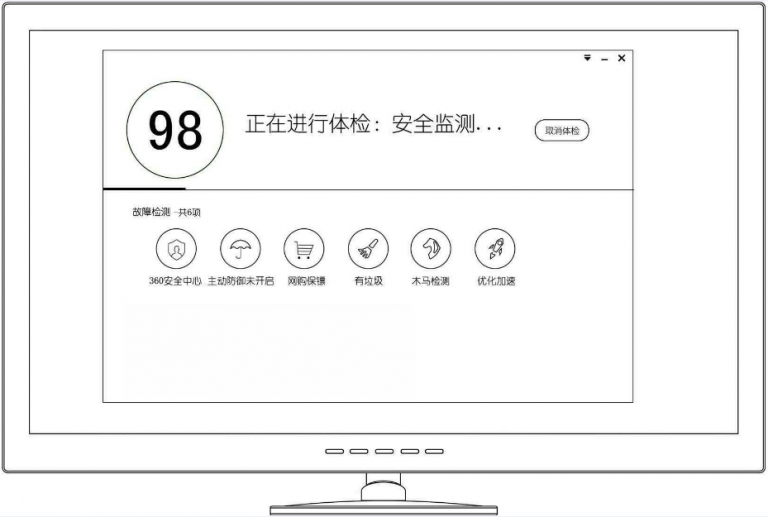The First Court Decision on GUI Design Patent Infringement in China
In the modern world, electronic devices such as computers, tablets, and smartphones, have become indispensable in our lives. Graphical User Interface (GUI) plays a significant role in promoting ease of use and visual attraction to users of the products, particularly electronic and software products. GUI often provides iconic features that cause consumers to immediately associate the GUI with a particular brand or product. Creation of GUI does require intellectual work and deserves to be protected as intellectual property (IP). Nowadays many products’ success depends upon creative GUI. Thus, protecting GUI becomes critically important to prevent a competitor from copying.
As in many countries around the world, in China, GUI as a software program can be protected under copyright. Design elements (e.g., icons, typeface/type font designs) in GUI which have a notable identifying effect to distinguish the goods or services of one source from others can be protected by trademark. The functional aspects of GUI, such as methods of human-machine interaction are inherently protectable through utility patent. In May 2014, the “product with GUI” was stipulated eligible for design patent protection. Although what is protected by the GUI design patents is still uncertain, so far the State Intellectual Property Office (SIPO) of China has issued more than 20,000 GUI design patents in less than four years. With increasing numbers of GUI design patents granted, both IP practitioners and patent owners have been wondering how powerful a GUI design patent could be in terms of enforcement against copiers.
On December 25, 2017, the Beijing IP Court (the “Court”) issued its decision in the very first infringement case involving a GUI patent, and sent a message to the IP world with respect to its position on enforcement of GUI design patent. The Court has been criticized for this decision which has put significant pressure on the patentees of GUI design patents. The very first GUI design patent infringement case in China was filed by Beijing Qihu Technology Co., Ltd. and Qizhi Software (Beijing) Co., Ltd. (collectively the “Plaintiffs”) against Beijing Jiangmin New Science Technology Co., Ltd. (the “Defendant”) in April 2016. The Plaintiffs alleged that the Defendant infringed the Plaintiffs’ design patent titled “Computer with Graphical User Interface” issued on November 5, 2014 (Pat. No. ZL201430329167.3; “Patent in Suit” hereinafter). Both Plaintiffs and Defendant are software companies specialized in anti-virus software. The front view of the first embodiment design of Patent in Suit and the representative user interface of the Jiangmin Optimization Expert (the “Accused Software”) are shown below. The Accused Software was downloadable from the Internet for free from December 2015 to June 2016. The Defendant upgraded the software product in September 2016. The user interface of the upgraded software looked very different from Patent in Suit.

A Front View of Patent in Suit

A Representative User Interface of the Accused Software
In this case, the Plaintiffs’ position was, they believed the GUI of the Accused Software bore a striking resemblance to the GUI of their software illustrated in Patent in Suit. Even if the Plaintiffs’ allegation was true, they still had to overcome the obstacle that as a design patent, Patent in Suit actually included a computer on whose screen displayed the GUI while the accused product was a software product. In order to meet the requirement of infringement, the Plaintiffs presented incoherent arguments based on direct infringement and contributory infringement.
For direct infringement, the Plaintiffs tried to argue the computer/computer screen should be excluded from the protection scope of Patent in Suit. The Plaintiffs contended that although Patent in Suit has the drawings with six side views of a computer/computer screen, the “device” in a “product with GUI” which displays the interface is no more than “what the GUI is attached to” and is therefore irrelevant to the protection scope of Patent in Suit. The Plaintiffs thus tried to eliminate the frame and stand of the computer screen from the patent’s protection scope and further argued that the protection scope should only be determined by the drawings showing changes-of-state of the GUI, which do not require showing the device, the computer/computer screen.
The Plaintiffs’ argument to support direct infringement was bold and actually deviated from the current patent laws of China. The base of the argument was tantamount to applying the partial design to construe a Chinese design patent where broken lines and dot lines are not allowed according to the current Chinese patent laws. Without any precedents or rules stipulated otherwise regarding construction of the new GUI design patent, the Court treated the GUI design patent as a conventional design patent and held that determination of the protection scope of a design patent requires taking both the product and design elements into account, which should be supported by the content as shown in the drawings or photos. That means the computer/computer screen should be included when construing the scope of Patent in Suit. Since the Accused Software did not fall into the scope of Patent in Suit, it did not constitute direct infringement.
As for contributory infringement argument, the Plaintiffs made a concession and contended that even if the computer/computer screen should be considered in determining the scope of Patent in Suit, the Defendant’s act of providing the Accused Software which had no other use than infringement to users who, under the Defendant’s abetment and assistance, downloaded, installed, and ran the Accused Software, constituted contributory infringement. However, the Court found that the prerequisite for this contributory infringement argument is establishment of direct infringement by users of the Accused Software. In this case, the users only downloaded and used the Accused Software on their own computers and did not make, offer to sell, or sell computers with the Accused Software[1]. At best, the Plaintiffs’ position merely suggested there were possibilities users could have sold or offered to sell computers with the Accused Software pre-installed, but the Plaintiffs provided no proof for this conjecture. As a result, the Court found no direct infringement by any party and rejected the Plaintiffs’ claim regarding contributory infringement.
In view of the first court decision on the GUI design patent enforcement case in China, the Court has been criticized for narrowing the scope of protection and significantly degrading the values of GUI design patent. Nevertheless, this case clearly demonstrated the dilemma between enforcement of GUI design patent in reality and application of the existing patent laws in China. Many commentators believe that the only way to resolve the dilemma is to introduce partial design into China’s patent system, which has been proposed in the upcoming amendment of the Patent Law and has very good prospects of being approved into effect in the near future. However, even with the partial design mechanism, protection provided by GUI design patent is still insufficient. Particularly, the software developers may not protect GUI through design patent against copiers if the court insists GUI design patent must be protected in combination with the product on which the GUI is applied and the product is limited only to a tangible object.
Interestingly, almost two months after the Qihu decision was issued, in the U.S., a jury from the Northern District of California found Corel Corporation and Corel, Inc.’s software product directly infringed several Microsoft’s design patents relating to GUI such as menus, toolbars used in Microsoft Office and other Microsoft “products.” See Microsoft Corporation v. Corel Corporation et al (Case: 5:15-cv-05836-EJD). It will be worth looking into the Microsoft case to compare it with the Qihu case in China. That way we may find a better balance between the burden on the applicant and patentee seeking protection from GUI design patent and interpretation of the existing patent laws in China.
[1] The Patent Law of China does not include the use of an infringed product as an act of infringement of a design patent. See Patent Law, Article 11.




